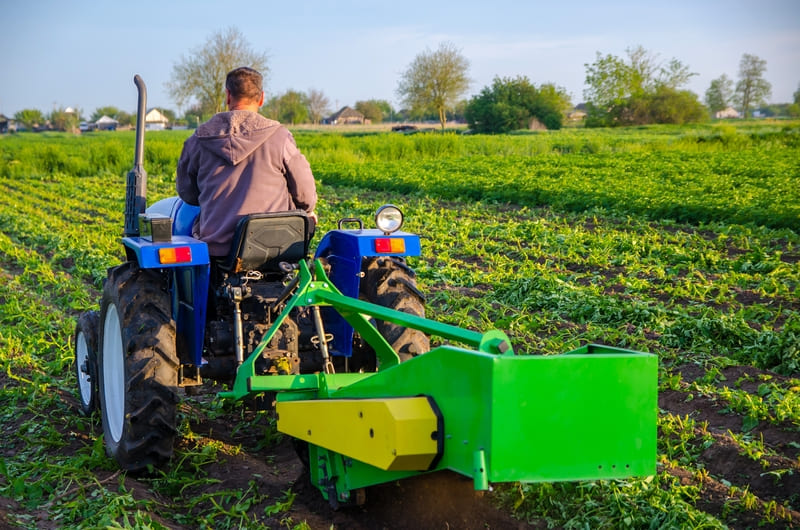When I started exploring compact tractors for my farm, I was surprised at the sheer range of ways these machines could be tailored for every unique job—saving time and making daily work much smoother.
Compact tractors are highly customizable through a wide range of attachments, hydraulic upgrades, operator comfort features, tire selection, technology integration, and ballast options. These modifications directly boost farm efficiency, adaptability, and productivity for specialized tasks throughout the seasons.
From choosing the right implement for your land to upgrading lighting or cab features for longer workdays, understanding these customization paths ensures your compact tractor evolves with your farm’s needs. Let’s break down how specific modifications can sharpen efficiency and daily operations.
1. What’s the Secret to Making Your Compact Tractor Equipment Truly Versatile?
Small farms struggle with limited horsepower and diverse task demands. Many owners overlook compatible attachments and limit their productivity. Here’s how the right tractor implements turn a compact tractor into a true workhorse.
The secret to versatility is using compatible attachments—like loaders, rotary tillers, and box blades—with your compact tractor’s Category 1 three-point hitch and 540 RPM PTO, unlocking efficiency for countless tasks.
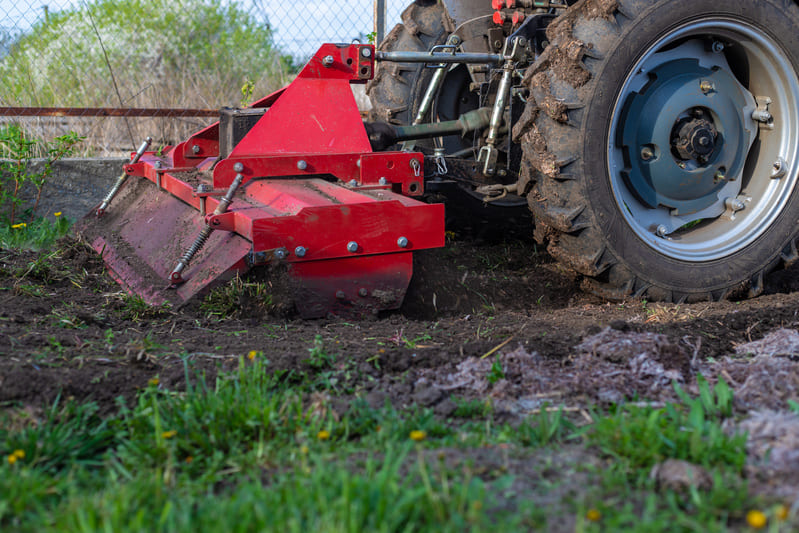
How Attachments Amplify Compact Tractor Capabilities
Versatility is the hallmark of modern compact tractors, especially those within the 20-60 HP power range. These tractors are engineered to accommodate a wide array of implements, thanks to standardized connection systems. Here, we examine attachment compatibility1, popular implement categories, and how these tools elevate tractor utility across all farming operations.
Unlocking Farm Efficiency Through Attachments
The backbone of attachment compatibility lies in the Category 1 three-point hitch system2 and the 540 RPM Power Take-Off (PTO). These industry standards allow a vast range of tools to connect seamlessly, enabling the operator to shift between soil preparation, material handling, mowing, and other specialized tasks with minimal downtime.
| Function | Ideal Attachment | Standard Requirement | Typical HP Range |
|---|---|---|---|
| Material Handling | Loader, Backhoe | Category 1 Hitch, Hydraulic Outlets | 20-60 HP |
| Soil Preparation | Rotary Tiller, Box Blade | Category 1 Hitch, 540 RPM PTO | 25-60 HP |
| Mowing & Cutting | Rotary Cutter, Finish Mower | Category 1 Hitch, 540 RPM PTO | 20-60 HP |
| Landscaping & Grading | Box Blade, Rake | Category 1 Hitch | 20-60 HP |
Categories of In-Demand Tractor Implements
- Loaders & Backhoes: Key for moving soil, manure, compost, or gravel. Backhoes excel at digging, trenching, and excavation jobs.
- Rotary Tillers: Perfect for breaking ground, seedbed preparation, and weed management, essential for both market gardens and row crop plots.
- Box Blades & Grading Implements: Vital for driveway maintenance, land leveling, landscaping, or even making new farm roads.
- Mowers: From brush hogs for rough fields to finish mowers for lawns, these attachments streamline maintenance over large areas.
Boosting Productivity with Quick-Attach Systems
Many modern compact tractors3 come equipped with quick-attach couplers4 for both the front loader and rear 3-point hitch. This reduces implement changeover time, resulting in more productive hours in the field. For instance, an operator might spread compost in the morning, till a new bed before lunch, and mow the orchard floor in the afternoon—all without using a wrench.
Factors in Selecting Attachments
Choosing implements must be aligned with the tractor’s horsepower, hydraulic capacity, and operational objectives. Overpowering or underutilizing equipment can reduce efficiency and shorten the lifespan of both tractor and tools. Understanding compatibility through the three-point hitch category and PTO specifications prevents mechanical issues and ensures optimal performance for every application.
Choosing the right attachments for your compact tractor—such as loaders, rotary tillers, and mowers—maximizes efficiency, leverages your tractor’s true potential, and delivers premium versatility for an entire spectrum of farm jobs.
Compatible attachments like loaders, rotary tillers, and mowers are essential for maximizing the versatility and efficiency of compact tractors.True
The content emphasizes that using the right implements with standardized connection systems enables compact tractors to efficiently perform a wide range of tasks.
Compact tractors are only designed to perform one specific function and cannot use multiple types of attachments.False
The content specifically highlights the versatility of compact tractors when equipped with various compatible attachments, which allows them to accomplish diverse farming operations.
2. What’s the Essential Secret to Boosting Tractor Hydraulic Performance?
Are your tractor’s hydraulic functions limiting your productivity? Discover how strategic system modifications can solve implement compatibility and efficiency challenges.
Upgrading a farm tractor’s hydraulic system is essential for using advanced attachments. The right modifications—like adding auxiliary ports or enhancing pump flow—unlock greater equipment versatility and efficiency on the farm.
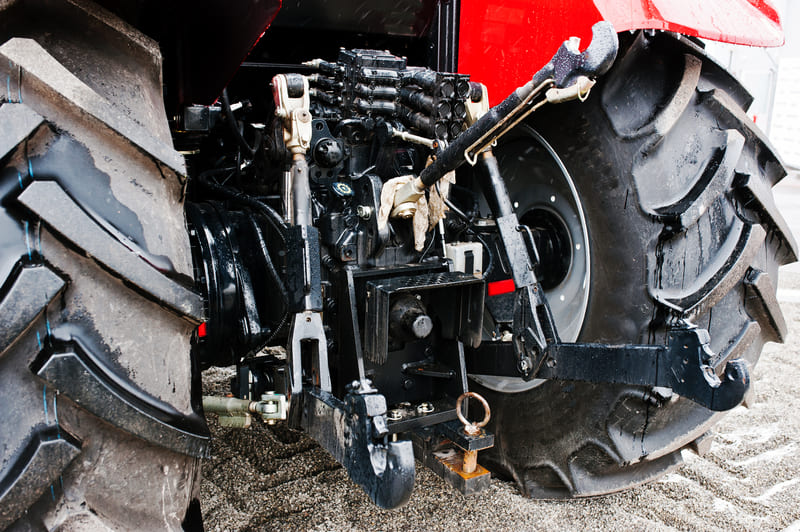
The Role of Hydraulic System Modifications in Farm Tractors
Farmers increasingly rely on attachments like grapples, hydraulic augers, and post drivers to maximize efficiency. Yet many compact tractors arrive with modest hydraulic capabilities that limit attachment options. Let’s examine how specific hydraulic system upgrades5 can transform tractor performance—and outline the steps for safe and effective modifications.
Understanding Hydraulic Demands of Modern Attachments
Implement Hydraulic Requirement Table:
| Attachment Type | Typical Flow Rate Need (L/min) | Pressure Requirement (bar) |
|---|---|---|
| Grapple | 20 - 40 | 150 - 200 |
| Hydraulic Auger | 25 - 60 | 160 - 210 |
| Post Driver | 30 - 70 | 180 - 250 |
Modern attachments often require higher flow rates and pressures than a stock tractor system can provide. Without sufficient hydraulic capacity, operators may experience sluggish, incomplete, or unsafe implement operation.
Key Tractor Hydraulic Modifications
Auxiliary Hydraulic Ports6:
Compact tractors usually come with limited hydraulic outlets. Adding rear or mid-mount auxiliary ports means operators can simultaneously run implements requiring individual hydraulic controls. For example, a grapple or a rear post driver may need its own port for optimal performance. Retrofitting additional ports involves proper plumbing, choosing robust components, and sometimes, integrating diverter valves.
Upgrading Hydraulic Pumps7:
On select models, upgrading the tractor’s main hydraulic pump can deliver a significant flow rate increase. A higher-capacity pump is essential when using tools with high volume needs, such as large augers or post drivers. When upgrading, alignment with tractor engine output and compatibility with existing filtration systems is vital to prevent damage or premature wear.
Flow Rate and Pressure Calibration:
Any modification should balance system pressure with attachment demand. Installing adjustable flow regulators or pressure relief valves guarantees both safe operation and maximizes the lifespan of tractor hydraulic components.
Practical Considerations:
- Model Compatibility: Not all tractors support pump upgrades. Verify modification options with manufacturer documents.
- Professional Installation: Hydraulic system upgrades can affect tractor warranties and safety. Professional installation is recommended for most users.
- Maintenance Impact: Enhanced systems often require more frequent inspection and service, particularly where dust or vibration is prevalent.
Deciding When to Upgrade
Operators should evaluate existing hydraulic performance8 against attachment specifications. If a new implement calls for higher flow and pressure, or you routinely switch between multiple hydraulic tools, auxiliary ports and pump upgrades are necessary to ensure reliable, safe operation.
By investing in tailored hydraulic system modifications, farmers ensure their tractors remain relevant and capable as attachment technology evolves.
Optimizing a tractor’s hydraulics with auxiliary ports9 and upgraded pumps unlocks the full potential of modern attachments. This ensures greater productivity, flexibility, and safety when tackling diverse agricultural challenges.
Upgrading a tractor’s hydraulic pump can provide the higher flow rates required for modern attachments like hydraulic augers and post drivers.True
The content explains that upgrading the main hydraulic pump enables higher flow rates, which are essential for operating advanced attachments that have increased hydraulic requirements.
All tractors can safely support hydraulic pump upgrades regardless of their model or manufacturer.False
The text specifies that not all tractor models are compatible with pump upgrades and that compatibility must be checked with manufacturer documentation to avoid potential damage.
3. What’s the Essential Tire and Ballasting Secret for Ultimate Tractor Traction?
Struggling with slipping or poor soil protection? The wrong tire or inadequate ballasting can cost you efficiency and results. Discover how optimized tire choices and ballasting transform tractor performance.
Choosing the right tire type—R1, R3, or R4—paired with effective ballasting, is proven to maximize tractor traction, boost pulling power, and protect soil, particularly under heavy equipment use.
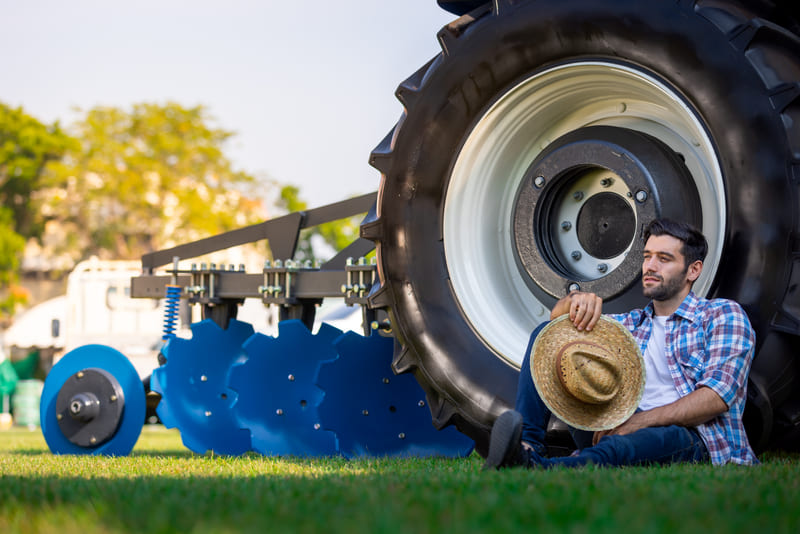
Decoding Tire Choices: R1, R3, and R4 Explained
Selecting the correct tire type is foundational for optimal tractor function. Each tire class is engineered for specific field challenges, with unique benefits and ideal applications.
| Tire Type | Key Feature | Best For | Soil Impact |
|---|---|---|---|
| R1 Ag | Deep lugs, aggressive | Plowing, heavy tillage | High disturbance |
| R3 Turf | Shallow tread, wide | Lawns, golf courses | Minimal compaction |
| R4 Industrial | Robust, versatile | Loader work, hard surfaces | Moderate impact |
R1 Ag: Maximum Traction for Field Operations
These feature tall, widely spaced lugs, delivering exceptional grip in tilled soils and muddy conditions. R1s10 are farmers' go-to for fieldwork involving high drawbar loads or uneven terrain. However, their aggressive tread can cause significant soil disturbance, which may not be ideal for finished lawns or lighter-duty tasks.
R3 Turf: Protecting Sensitive Surfaces
R3 tires11 use a broad, shallow tread optimized for maximum ground contact. This design minimizes turf disruption, making them suited for mowing, landscaping, or areas where ground preservation is critical. Their traction on loose or muddy soils is limited compared to R1, so they are best applied to dry, firm surfaces.
R4 Industrial: Balancing Strength and Versatility
R4 tires strike a middle ground, with thicker, sturdier sidewalls and moderate tread. They excel for tractors working with loaders on construction sites or mixed-use properties, offering durability and adequate traction on hard, compacted ground. Their greater puncture resistance is an added benefit for rugged conditions.
Ballasting: Adding Stability and Pulling Power
Ballasting enhances the transfer of engine power to the ground, improving both traction and safety. It involves increasing weight, either inside the tire (liquid fill) or on the tractor (wheel weights).
Liquid Ballasting vs. Wheel Weights
| Ballast Type | Application | Key Benefit | Trade-Offs |
|---|---|---|---|
| Liquid Fill | Inside tire (calcium, beet juice) | Lowers center of gravity, increases stability | Slightly harder ride, risk of corrosion |
| Wheel Weights | Bolted to rear wheels | Adjustable, easy removal | Adds overall weight, less impact on ride quality |
Matching Ballast Strategy to Implement Need
When operating front loaders or ground-engaging tools—like plows or heavy cultivators—additional rear weight prevents the tractor from tipping and ensures the driving wheels stay firmly on the ground. Liquid ballast lowers the center of gravity, reducing rollover risk. Wheel weights are easy to install or remove and make fine-tuning possible as tasks change.
The Soil Compaction Callout
While ballast boosts traction, too much weight can compact soil, hurting crop yields. Choosing appropriate tire inflation12 in combination with proper ballast type prevents excessive ground pressure—critical for maintaining healthy root zones in crop fields.
Tire and Ballast Maintenance: Proactive Steps
Regularly inspect tire pressure and monitor for leaks if using liquid ballast13. Underinflated tires increase wear and reduce fuel efficiency, while overinflation limits the tire’s contact patch, negating the benefits of traction and soil protection strategies.
In short, harmonizing tire choice with ballasting is an art—one that unlocks the full potential of your tractor's capabilities in various working conditions.
Properly matching tractor tire types—R1, R3, or R4—combined with tailored ballasting, delivers superior traction, pulling power, and soil protection. Adjust strategies to your implements and ground conditions for optimal productivity and equipment longevity.
Matching the correct tractor tire type with appropriate ballasting increases both traction and soil protection.True
The content explains that choosing the right tire (R1, R3, or R4) and applying tailored ballast maximizes traction and helps minimize soil damage under different working conditions.
R3 turf tires offer the best traction for muddy, tilled soils compared to R1 agricultural tires.False
R3 turf tires are designed for minimal soil disturbance on firm, dry surfaces and provide limited traction in muddy or tilled soils; R1 tires are superior in such conditions.
4. What Are the Essential Tractor Cab Upgrades for Maximum Operator Comfort?
Long days in the field leave tractor operators sore and tired. This discomfort saps productivity and increases errors. Fortunately, specific tractor cab upgrades can turn long shifts into comfortable, efficient work.
Enhanced tractor cab upgrades, such as weatherproof cabins, suspension seats, climate control, and ergonomic controls, are proven to reduce operator fatigue and improve productivity, making fieldwork more efficient and less taxing.
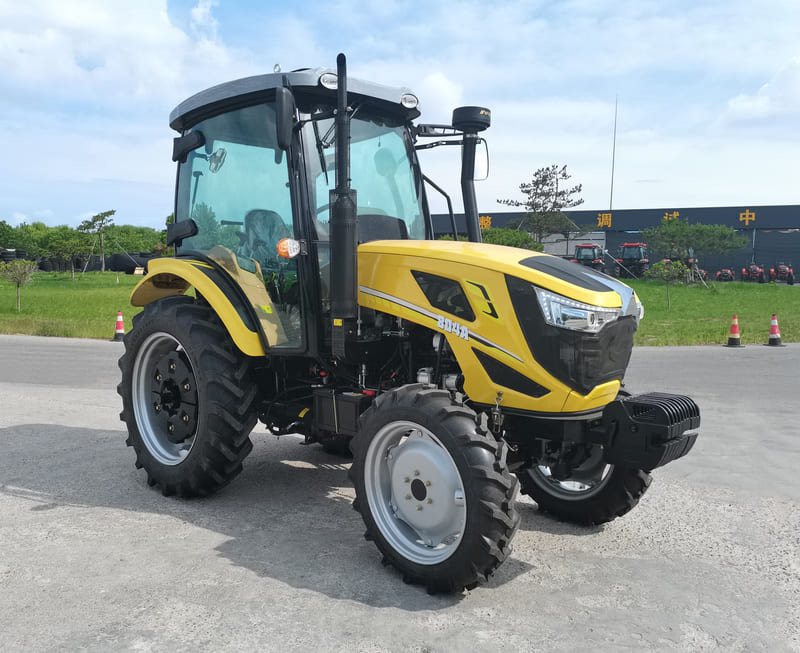
Why Upgrade Tractor Cab and Operator Controls?
Continuous hours aboard a farm tractor expose operators to vibration, harsh weather, and awkward movements. Standard cabins may provide basic shelter, but today’s advanced farm tasks require more. Upgrading cab and operator controls transforms the operator environment, leading to measurable improvements in health, performance, and efficiency.
Weatherproof Cabs: Shielding Operators from the Elements
Modern weatherproof cabs14 create a sealed environment, keeping rain, dust, wind, and temperature extremes at bay. This barrier allows for uninterrupted work regardless of external weather, ensuring output remains consistent through the seasons.
Suspension Seating: Reducing Impact and Fatigue
Traditional tractor seats offer nominal shock absorption, which can lead to back strain and joint discomfort during prolonged operation. In contrast, suspension seating15 absorbs bumps and vibrations from uneven terrain. This upgrade is particularly valuable for tasks requiring slow, repetitive movements or frequent field passes.
| Feature | Operator Benefit | Farm Productivity Impact |
|---|---|---|
| Weatherproof cab | Protection from weather | Extends workable hours |
| Suspension seating | Reduces fatigue | Enables longer operation |
| Heated/air conditioning | Temperature control | Boosts year-round comfort |
| Ergonomic controls | Lowers strain | Improves accuracy & speed |
| Digital displays | Simplifies monitoring | Enhances decision-making |
Heated and Air-Conditioned Cabins: Year-Round Productivity
A climate-controlled cabin16 enables safe and comfortable operation in frosty winters and sweltering summers. Heating and air conditioning systems stabilize the cabin temperature, which is vital for maintaining operator attention, health, and morale, particularly during extreme weather.
Ergonomic Control Upgrades: Lowering Physical Strain
Operator fatigue is exacerbated by repetitive motion and poorly positioned controls. Upgrading to ergonomic control layouts17 minimizes stretching, twisting, and repetitive strain, providing intuitive, easy access to all primary controls. Ergonomics not only reduce the risk of injury but also speed up control responses, improving fieldwork precision.
Digital Displays: Smart Management at a Glance
Integrated digital displays bring vital data front and center. Operators receive real-time information on tractor performance, fuel consumption, and work rates, reducing guesswork. Some systems offer alerts that prompt timely maintenance or operational adjustments, preventing downtime and costly repairs.
Overcoming Traditional Cab Limitations
While older tractor models often feature open or minimally-equipped cabins, these configurations can no longer meet the demands of modern farming. Upgrades are not just luxuries; they are investments in operator well-being18 and operational efficiency. By integrating the above innovations, farms can achieve a greater return on investment through reduced absenteeism, enhanced productivity, and fewer machine breakdowns due to more attentive, comfortable operation.
Focusing on cab and operator controls is a strategic move in the evolution of farm tractor equipment, allowing for adaptation to evolving farming scales, crop diversity, and weather variability. Implementing these enhancements places any operation ahead in both technology and human resource care.
Upgrading tractor cabs with weatherproof comfort, advanced seating, climate control, ergonomic controls, and digital displays directly combats operator fatigue. These improvements enable longer hours, better concentration, and higher productivity, making them essential for any modern, efficiency-focused farming operation.
Suspension seats in tractor cabs help reduce operator fatigue during long hours of fieldwork.True
Suspension seats absorb shocks and vibrations, lessening physical strain and fatigue on tractor operators.
Digital displays in tractor cabs have no impact on productivity or decision-making.False
Digital displays enhance productivity by providing real-time data and alerts, which assist operators in making informed decisions.
5. What’s the Essential Secret to Choosing Tractor Engine and Transmission Options?
Confused about which tractor engine or transmission fits your needs? Missteps lead to wasted fuel and poor control. Understand options, prioritize the right setup, and work smarter.
The essential secret to choosing tractor engine and transmission options is aligning tractor features—like turbocharged diesel engines or hydrostatic transmissions—with your specific performance, maneuverability, and efficiency needs for optimal productivity and ease of use.
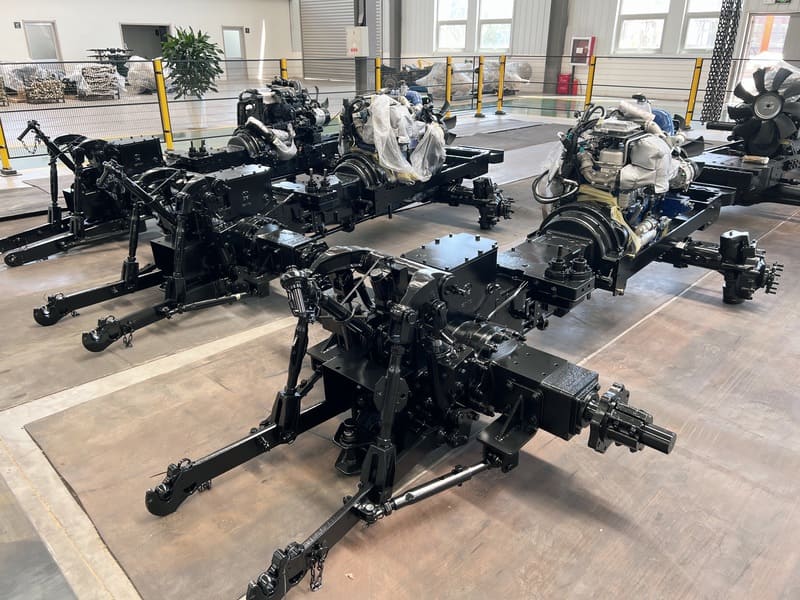
Understanding Engine Variations: Performance and Efficiency
When selecting a compact tractor, buyers face engine choices that directly affect operational success. Diesel engines19, especially with turbocharging, offer robust torque and extended durability. Higher torque improves the ability to handle attachments and heavy workloads with less strain on the engine.
| Engine Type | Key Features | Best For |
|---|---|---|
| Naturally Aspirated Diesel | Simplicity, reliability | General farm work, low maintenance |
| Turbocharged Diesel | Higher torque, efficiency | Heavy tasks, hilly terrain |
Turbocharging20 enhances power without increasing engine size, translating to better fuel efficiency and accelerated task completion. However, this complexity may require more diligent maintenance, making it important to weigh the trade-offs.
Transmission Types: Matching Task and Operator Preferences
Transmission choice plays a critical role in productivity and user comfort. Compact tractor transmissions typically fall into two main categories:
-
Gear Transmissions21: Known as mechanical or manual, these allow fixed speed settings for each gear. They are durable and fuel-efficient, especially for tasks like plowing or tilling, where maintaining a steady pace over long stretches is crucial. Gear transmissions may be preferred by experienced operators who value control and predictability.
-
Hydrostatic Transmissions22: These allow easy speed adjustments without clutching or shifting. They operate like automotive automatic transmissions, using fluid dynamics instead of direct gear links. Operators can adjust speed on the fly, making hydrostatic transmissions ideal for loader work, mowing, or any task requiring frequent changes in direction or pace. They demand less training and reduce operator fatigue, but may slightly increase fuel consumption.
Transmission and Task Suitability Table
| Transmission Type | Ease of Use | Fuel Efficiency | Best For |
|---|---|---|---|
| Gear | Moderate | High | Constant-speed tasks, pulling |
| Hydrostatic | High | Moderate | Loader work, frequent reversing |
Additional Features: Electronic Cruise Control
Modern compact tractors sometimes incorporate electronic cruise control, which automates speed management—helpful for jobs requiring precise, consistent operation, such as seeding or large-area mowing. This feature can significantly reduce operator fatigue and bolster productivity over extended working periods.
Critical Considerations for Buyers
- Task Demands: If you face jobs needing frequent start-stop or speed/direction changes—such as landscaping or loader operations—choose hydrostatic transmissions. For heavy towing or consistent field work, a gear transmission23 or turbocharged diesel engine offers better value.
- Operator Experience: Novices may benefit from the simplicity and forgiving nature of hydrostatic transmissions24. Experienced users handling repetitive tasks may favor the efficiency and reliability of gear-based systems.
- Long-term Value: While initial investment in advanced engines or transmissions can be higher, operational savings through better fuel efficiency or reduced maintenance may justify the expense.
In summary, selecting the optimal tractor engine and transmission setup means analyzing your most common jobs, operator preferences, and the farm’s physical demands. Thoughtful combinations maximize fuel efficiency, comfort, and task productivity for years to come.
Turbocharged diesel engines provide higher torque and fuel efficiency compared to naturally aspirated diesel engines.True
According to the content, turbocharged diesel engines deliver more torque and efficiency, making them suitable for heavy tasks and challenging terrains.
Gear transmissions are best suited for tasks requiring frequent speed and direction changes.False
The text explains that hydrostatic transmissions, not gear transmissions, excel at tasks that involve frequent changes in speed or direction.
6. What Are the Essential Lighting and Electrical Upgrades for Modern Tractors?
Struggling with outdated lighting or electronic overloads on your tractor? Poor visibility and inadequate power can risk your productivity. Effective lighting and electrical upgrades solve these critical challenges.
The essential lighting and electrical upgrades for modern tractors include LED work lights, accessory power outlets, and alternator upgrades. Together, these improvements boost night visibility, power high-demand implements, and ensure reliable support for advanced equipment like GPS, sprayers, and sensors.
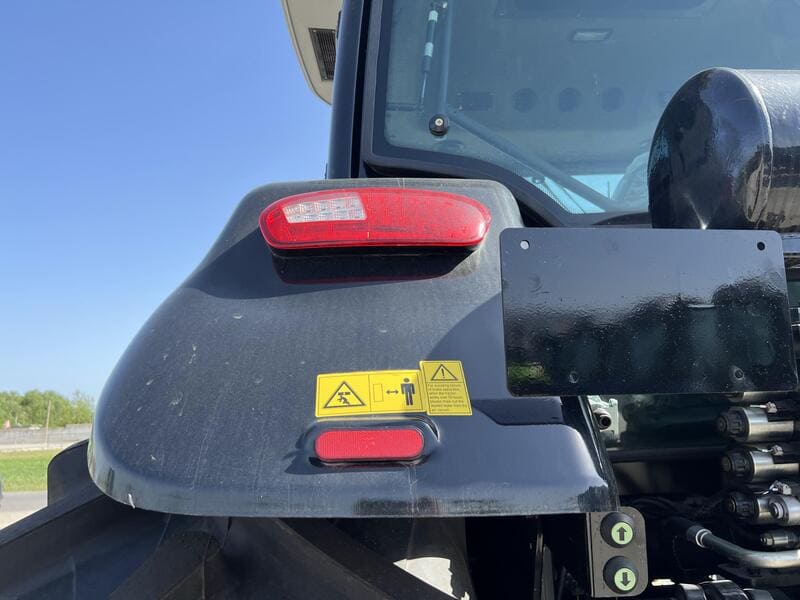
Understanding the Importance of Tractor Lighting and Electrical Upgrades
Why Lighting Matters in Tractor Operations
Effective illumination is more than a convenience—it's a necessity for safety and precision. Poor lighting during dusk, dawn, or night work can lead to missed passes, uneven applications, and hazardous working conditions. Upgrading work lights—especially with LED options25—not only brightens the operating area but also greatly reduces eye strain and operational error.
The Power of Accessory Outlets & Electrical Support
Modern tractors are increasingly tasked with operating advanced implements such as real-time GPS mapping, application controllers, automated sprayers, and digital sensors. Each of these devices demands stable, reliable power. Factory-installed accessory outlets are sometimes limited or non-existent, restricting what can be accomplished on a single machine. Adding accessory power outlets is critical for seamless integration of technology in the field.
The Role of Alternator Upgrades
The electrical load on a contemporary tractor is far greater than in the past due to advanced control systems, camera arrays, and auxiliary implements. Stock alternators may be insufficient, leading to power shortages or, worse, component failures. Upgrading to a higher-output alternator26 is the solution for consistent voltage delivery, safeguarding your sensitive equipment from power fluctuations.
Comparing Lighting and Power Upgrade Options
| Upgrade Type | Benefits | Potential Challenges |
|---|---|---|
| LED Work Lights | Brighter output, less energy use, longer lifespan | Higher upfront costs |
| Accessory Power Outlets | Supports multiple devices, reduces wiring tangles | Installation complexity |
| Alternator Upgrades | Handles increased electrical loads | Compatibility and installation |
Best Practices for Implementation
- Assess Your Needs: Determine which tools and implements require power and what lighting conditions you routinely encounter.
- Select Quality Products: Invest in commercial-grade LEDs27 and certified outlets for long-term reliability.
- Plan Electrical Loads: Calculate projected amp draws and choose an alternator that guarantees a margin above your maximum requirement.
- Professional Installation: Proper wiring and secure mounting are essential to prevents shorts and ensure weather resistance.
Integration with Tractor Technology
Upgraded power infrastructure also positions your tractor to seamlessly accept future technologies, from more sensitive field sensors to autonomous operation modules. This future-proofs your tractor investment and ensures you remain competitive as precision agriculture28 evolves rapidly.
Upgrading tractor lighting with LEDs, adding accessory power outlets, and investing in higher-output alternators collectively enhance safety, field efficiency, and support for modern implements. These upgrades are essential for maximizing productivity and adapting to tomorrow’s agricultural technology changes.
Upgrading tractor lighting to LED work lights significantly improves visibility and reduces operational errors in low-light conditions.True
The content explains that LED work lights provide brighter illumination, reducing eye strain and helping prevent mistakes during night or low-visibility operations.
Stock alternators in modern tractors are always sufficient to power all advanced electronic implements and devices.False
The content states that stock alternators may be insufficient for increased electrical loads, requiring upgrades to prevent power shortages and equipment failures.
7. What’s the Secret Behind High-Performance Tractor Guidance Systems?
Struggling with waste and inefficiency on your farmland? Overlaps, missed spots, and manual note-taking drain time and resources. Advanced tractor guidance technology offers a game-changing solution.
State-of-the-art tractor guidance systems leverage GPS and smart integrations to sharpen accuracy, minimize input waste, streamline documentation, and eliminate overlapping applications, maximizing your farm’s productivity and profitability.
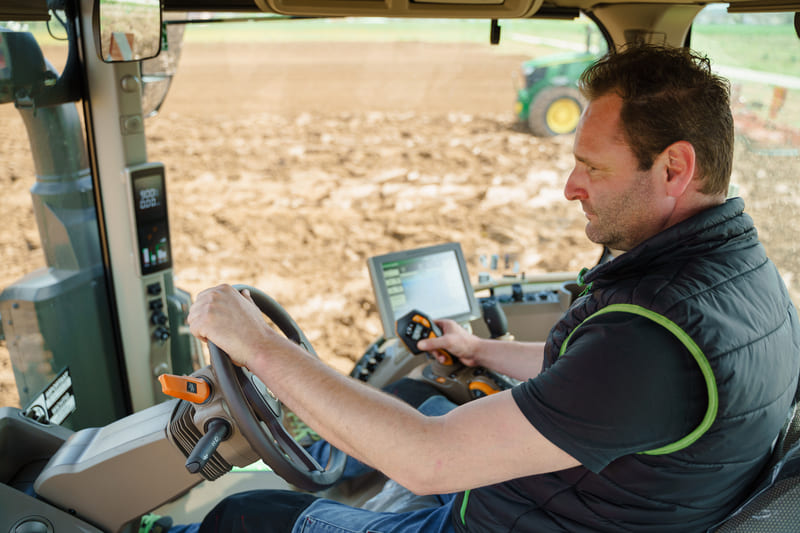
Understanding GPS Guidance and Auto-Steer for Tractors
Modern tractor guidance systems rely on Global Positioning System (GPS)29 (GPS) technology, offering centimeter-level accuracy. Compact tractors now benefit from technologies that were once exclusive to large, high-end models. Let’s break down the pivotal features fueling this agricultural revolution:
GPS Guidance Systems – Precision at Every Pass
These systems make pass-to-pass alignment seamless. By generating precise field maps, they prevent costly overlaps or missed sections. Operators receive real-time steering cues or fully automated steering commands, reducing fatigue and human error.
Auto-Steer Assist – Automation at Your Fingertips
Auto-steer assists30 use GPS data to automatically guide tractors along optimal paths. This allows operators to focus on monitoring implements, rather than constantly correcting course. The result? Consistent coverage and significant savings in fuel, seed, fertilizer, and labor.
| Technology | Benefit | Result |
|---|---|---|
| GPS Guidance | Accurate pass alignment | Fewer overlaps and gaps |
| Auto-Steer Assist | Automated steering | Less operator fatigue, higher output |
| ISOBUS Terminals | Unified implement control | Streamlined, error-free data records |
ISOBUS-Compatible Terminals – Integrated Command Centers
ISOBUS terminals are digital hubs that standardize machine-to-implement communication. They allow all compatible equipment to "speak" the same language, making setup faster and data collection uniform and centralized. This dramatically improves documentation, compliance, and traceability of every field operation.
Task Documentation and Input Optimization
Electronics log each field pass, recording location, time, and applied inputs. This enables farms to:
- Analyze input rates and make informed decisions for future seasons
- Prove compliance with agricultural standards and traceability programs31
- Reduce over-application of costly inputs like seed or fertilizer
Overlap Elimination and Time Savings
By virtually eliminating both overlap and missed strips, guidance systems cut wasted time and materials. Reducing these inefficiencies is especially valuable on irregular-shaped fields or when visibility is compromised.
Real-World Impact: Increased Efficiency
Studies show that farms integrating GPS guidance and auto-steer technology32 can save up to 10% on input costs and increase operational efficiency by up to 20%. These savings, alongside improved record-keeping, support the transition toward smarter, more sustainable farming.
Tractor Guidance Technology
Embracing advanced guidance systems unlocks improved accuracy, traceability, and resource savings for compact tractors. By automating steering and integrating implement controls, farms can expect streamlined operations, precise documentation, and a tangible boost in productivity.
Modern tractor guidance systems use GPS technology to provide centimeter-level accuracy in field operations.True
The content highlights that GPS-based guidance systems enable extremely precise alignment and positioning, resulting in minimized overlaps and increased accuracy.
Auto-steer assist requires operators to manually steer tractors at all times to ensure accurate field passes.False
The content specifically states that auto-steer assists automate steering using GPS data, reducing the need for manual steering by the operator.
8. What Is the Essential Secret to Tractor Ballast Customization?
Using incorrect ballast for your tractor reduces safety and traction, risking costly downtime and field damage. Many overlook weight customization’s precision, but it’s essential for optimal tractor equipment performance on varying terrains.
Customizing tractor ballast—through suitcase weights, ballast boxes, and brackets—ensures safety, maximum traction, and efficient operation, tailored for specific attachments, terrains, and tractor models.
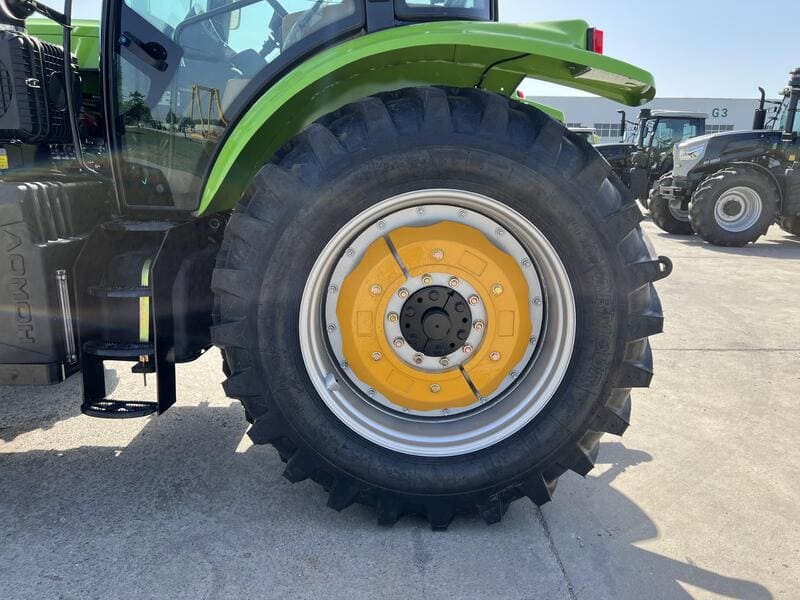
Understanding Tractor Ballast: Why Customization Matters
Proper ballast33 refers to adding or adjusting weight on a tractor to counterbalance implements or attachments, optimize wheel contact, and maximize operational safety. Incorrect or generic ballast applications can lead to compromised traction, excessive tire wear34, or even dangerous tipping, especially with heavy loader work or on sloped terrain.
Key Ballast Customization Options
| Ballast Type | Application Areas | Pros | Cons |
|---|---|---|---|
| Suitcase Weights | Front/rear mounting | Removable, adjustable | Space limitations |
| Ballast Box | Rear mounting | High capacity, versatile | Not always quick-change |
| Weight Brackets | Front/rear mount | Secure, model-specific fit | Less flexibility |
The Science Behind Ballasting Correctly
Every tractor model has unique weight distribution characteristics35. When attaching implements—such as loaders, mowers, or plows—the weight shifted forward or rearward alters the tractor’s center of gravity. This balance governs traction, steering control, and rollover risk.
- Loader Work: Requires heavy front attachments, risking rear wheel lift. Custom front suitcase weights or ballast boxes on the rear counteract this, restoring equilibrium.
- Mowing or Tillage: Implements towed from the rear may make the tractor front light, necessitating front-mounted weights for steering efficiency.
Terrain-Specific Ballast Strategies
Terrain type directly influences ballast needs. Slopes demand more counterweight to prevent tipping, while soft soils require weights spread to prevent over-compaction.
- Hills: Brackets and carefully measured weights both front and rear keep the tractor stable.
- Soft ground: Lighter ballast or optimized distribution prevents traction loss without burdening the soil structure.
Choosing the Right Ballast for Your Tractor Model
Not all weights fit every tractor. Suitcase weights come in various sizes; ballast boxes36 can often be filled with sand, gravel, or concrete to achieve a targeted weight. Brackets should match the tractor frame, with proper hardware for secure attachment.
Customization Checklist:
- Identify attachment type and typical use (loader, mower, plow)
- Assess terrain demands (flat, sloped, soft)
- Determine manufacturer-recommended ballast capacities and distribution points
- Select compatible weights/brackets for your specific tractor model
Consistency in reevaluating ballast after changing tasks or attachments ensures continued safety and performance.
Maximizing Safety and Efficiency with Customized Tractor Ballast
Strategic tractor ballast customization is the essential secret to safer, more efficient tractor operation. By aligning ballast types, placement, and total weight with each attachment and terrain, you unlock superior traction and minimize equipment wear, improving both productivity and operator safety in every field condition.
Customizing tractor ballast enhances safety and traction by ensuring optimal weight distribution for specific attachments and terrains.True
The content explains that proper ballast customization improves safety, traction, and efficiency tailored to each tractor's use and conditions.
All tractor weights and ballast boxes are universally compatible with every tractor model.False
It is stated that weights and brackets must match the specific tractor model, as not all ballast options are universally compatible.
9. What Are the Essential Tractor Maintenance Accessories for Peak Efficiency?
Struggling with costly downtime and tedious maintenance on your tractor? Ignoring efficiency-boosting add-ons sets you back. Discover how simple accessories deliver big operational improvements and year-round productivity.
Adding essential tractor maintenance accessories—such as extended oil drain lines, quick-access panels, and upgraded filters—transforms routine servicing. These aftermarket solutions accelerate maintenance, reduce downtime, and keep tractors running at optimal efficiency throughout the farming season.
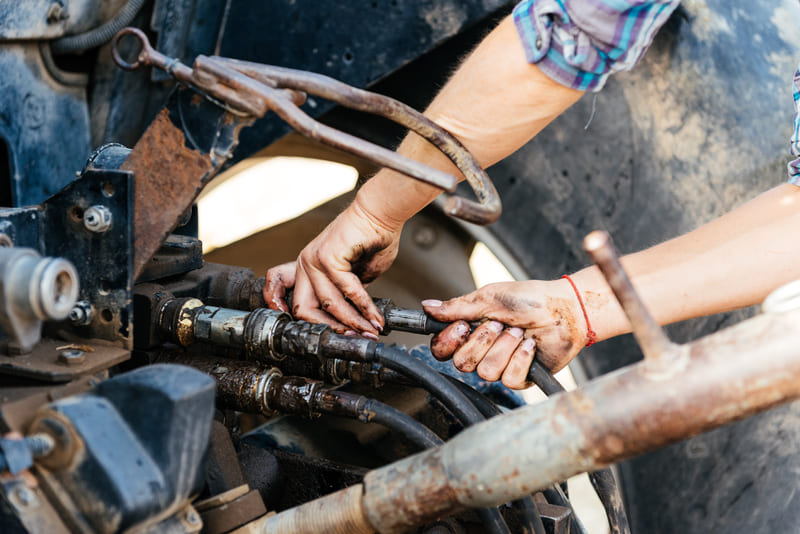
Why Do These Accessories Matter for Tractor Maintenance?
Routine maintenance determines a tractor’s performance and lifespan. Yet, traditional servicing often means lengthy halts, complicated access to components, and missed field time. Modern farming demands solutions that simplify and expedite these essential tasks. Here’s how aftermarket accessories become game-changers:
Extended Oil Drain Lines37
Changing oil is vital, but awkward access to drain points increases the risk of spills and labor time. Extended oil drain lines reposition these outlets for easy reach, enabling fast and mess-free oil changes.
Benefits:
- Faster oil service intervals
- Reduced spill risks
- Cleaner work environment
- Lower labor intensity per maintenance cycle
Quick-Access Maintenance Panels38
Tractor components like filters, radiators, and hydraulics often hide behind complex covers. Upgrading to quick-access panels ensures technicians can reach, inspect, and service critical parts swiftly without removing entire assemblies.
Impact:
- Speeds up safety checks
- Minimizes downtime during emergencies
- Reduces potential for accidental damage
Upgraded Filtration Systems
Dirt, debris, and contaminants diminish engine and hydraulic system efficiency. Advanced air and oil filters trap more unwanted particles, extending component life and preserving operational integrity.
Advantages:
- Prolongs engine life
- Cuts repair costs
- Maintains fuel economy
| Accessory Type | Core Benefit | Service Time Reduction | Additional Value |
|---|---|---|---|
| Extended Oil Drain Lines | Easier oil changes | Up to 50% | Reduced spills, cleaner ops |
| Quick-Access Maintenance Panels | Faster inspections | Up to 40% | Less risk of damage |
| Upgraded Filters | Better protection | Varies | Longer engine life |
Optimizing Workflows Through Accessory Integration
With aftermarket upgrades39, both daily and scheduled maintenance become seamless. An operator can check oil or change a filter in less than half the time compared to conventional setups. This speed doesn’t just benefit large-scale farms—smaller operations gain valuable extra hours per season. Cumulatively, these accessories support proactive upkeep, allowing gradual wear and minor issues to be spotted and corrected before costly failures occur.
Add-ons like extended drain lines40 are especially helpful during peak seasons, when every hour a tractor spends off the field directly impacts productivity. Quick-access panels allow for rapid mid-season checks and reduce the tendency to skip inspections due to complexity. Upgraded filters, while seemingly minor, can be the difference between trouble-free operation and unexpected breakdown.
Whether you operate a single utility tractor or manage a diverse fleet, implementing these maintenance-focused accessories is a proven strategy for maximizing uptime, reducing emergency repairs, and extending the lifespan of critical farm machinery.
Regularly reviewing accessory options, training personnel on their use, and scheduling upgrades as part of routine service ensures benefits multiply season after season.
All told, these efficiency-boosting solutions are about working smarter, not harder—freeing up resources for core farming tasks.
Upgrading your tractor with extended oil drain lines, quick-access panels, and advanced filters is a simple, proven route to reduced service time, minimized downtime, and consistently high operational efficiency. The right maintenance accessories pay off season after season for any farmer prioritizing productivity.
Upgrading tractors with accessories like extended oil drain lines, quick-access panels, and advanced filters reduces service time and minimizes downtime.True
The content specifically explains how these accessories speed up maintenance, leading to less downtime and greater efficiency.
Installing maintenance accessories such as extended oil drain lines and upgraded filters increases the likelihood of emergency repairs.False
The text states these accessories decrease emergency repairs by facilitating proactive maintenance and reducing failures.
Conclusion
Compact tractors offer extensive customization options in attachments, hydraulics, comfort, technology, and more, enabling farmers to optimize efficiency and performance for a wide variety of farm tasks.
-
Understanding attachment compatibility is crucial for maximizing the utility of your compact tractor and ensuring efficient farming operations. ↩
-
Exploring the Category 1 three-point hitch system will help you understand its importance in connecting various implements effectively. ↩
-
Explore this link to understand how compact tractors enhance farming efficiency and versatility. ↩
-
Learn about quick-attach couplers and how they can significantly reduce downtime during farming operations. ↩
-
Explore this link to understand how hydraulic upgrades can enhance your tractor's performance and efficiency. ↩
-
Explore this link to understand how Auxiliary Hydraulic Ports can enhance your tractor's functionality and efficiency. ↩
-
Learn about the advantages of Upgrading Hydraulic Pumps for better flow rates and compatibility with high-demand tools. ↩
-
Understanding hydraulic performance is crucial for optimizing machinery efficiency and ensuring safe operations. ↩
-
Exploring auxiliary ports can help you enhance your hydraulic system's capabilities and improve overall productivity. ↩
-
Explore this link to understand why R1s are favored by farmers for their exceptional grip and performance in challenging field conditions. ↩
-
Discover how R3 tires are designed to protect the ground while providing optimal performance for mowing and landscaping tasks. ↩
-
Learn about the critical role of tire inflation in optimizing tractor efficiency and protecting soil integrity. ↩
-
Explore how liquid ballast can enhance tractor stability and reduce rollover risks, ensuring safer operations. ↩
-
Learn how weatherproof cabs protect operators from harsh conditions, ensuring consistent productivity on the farm. ↩
-
Explore how suspension seating can enhance comfort and reduce strain for tractor operators during long hours. ↩
-
Explore how a climate-controlled cabin enhances safety and comfort, crucial for effective operation in harsh conditions. ↩
-
Discover the advantages of ergonomic designs that reduce fatigue and enhance precision in fieldwork. ↩
-
Explore how enhancing operator well-being can lead to increased productivity and reduced absenteeism in farming. ↩
-
Explore the advantages of Diesel engines for compact tractors, including durability and efficiency, to make an informed choice. ↩
-
Learn how Turbocharging enhances power and efficiency in compact tractors, helping you maximize productivity. ↩
-
Explore this link to understand how Gear Transmissions enhance durability and fuel efficiency for various tasks. ↩
-
Discover how Hydrostatic Transmissions can reduce operator fatigue and improve productivity in your tasks. ↩
-
Learn about gear transmission advantages and how they can boost productivity and reliability in heavy-duty tasks. ↩
-
Explore this link to understand how hydrostatic transmissions enhance efficiency and ease of use for various tractor operations. ↩
-
Explore the advantages of LED options for work lights, including energy efficiency and improved visibility, essential for safety and productivity. ↩
-
Learn how a higher-output alternator can enhance your tractor's performance, ensuring reliable power for advanced implements and preventing failures. ↩
-
Explore how commercial-grade LEDs can enhance efficiency and longevity in agricultural applications. ↩
-
Learn about precision agriculture's role in improving productivity and sustainability in farming practices. ↩
-
Explore how GPS technology enhances precision farming and boosts efficiency in modern agriculture. ↩
-
Learn about the advantages of auto-steer assists in reducing operator fatigue and optimizing field coverage. ↩
-
Learn about traceability programs to see how they ensure compliance and improve accountability in farming practices. ↩
-
Explore this link to understand how GPS guidance and auto-steer can enhance efficiency and reduce costs in modern agriculture. ↩
-
Understanding proper ballast can enhance tractor performance and safety, ensuring optimal weight distribution and traction. ↩
-
Preventing excessive tire wear is crucial for maintaining tractor efficiency and reducing long-term costs; explore effective strategies. ↩
-
Understanding weight distribution is crucial for optimizing tractor performance and safety, especially when using various implements. ↩
-
Explore this link to understand how ballast boxes can enhance tractor stability and performance. ↩
-
Explore how Extended Oil Drain Lines can simplify oil changes, reduce spills, and enhance maintenance efficiency. ↩
-
Discover the advantages of Quick-Access Maintenance Panels in speeding up maintenance and minimizing downtime. ↩
-
Explore how aftermarket upgrades can enhance efficiency and reduce maintenance time for your farm equipment. ↩
-
Learn about the advantages of extended drain lines in maximizing productivity and minimizing downtime during peak seasons. ↩

